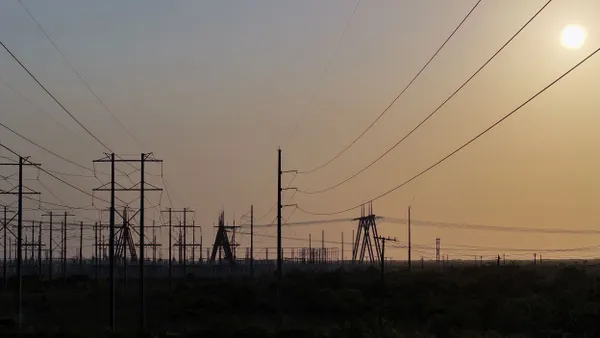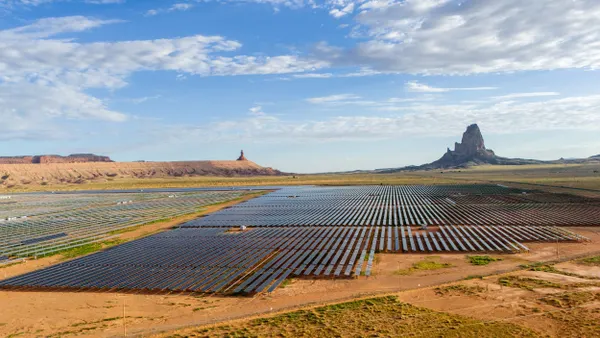Dive Brief:
-
Pacific Gas & Electric’s proposal to transfer 5.6 GW of non-nuclear generating assets to a new subsidiary in preparation for selling a 49.9% stake lacks enough details, including how it would affect the utility’s transmission rates, to be approved, according to Tuesday filings at the Federal Energy Regulatory Commission.
-
The California Hydropower Reform Coalition and other organizations objected to PG&E seeking approval of its plan in a two-part process, with a request for approval of a sale expected to come later this year. Details of the sale are needed to know whether moving the power assets to Pacific Generation, the subsidiary, is in the public interest, according to the coalition.
-
Private equity will likely be the buyer of PG&E’s rate-based generating assets, according to Public Citizen. “Transferring control of consumer-funded assets to opaque private equity will impede effective state regulatory oversight, further eroding consumer protections,” the consumer watchdog group said.
Dive Insight:
PG&E in September said it planned to sell a minority stake in its non-nuclear generating assets to help fund its capital investment plans such as wildfire mitigation work, safety and reliability projects and clean energy expansion.
The assets include about 3,850 MW of hydroelectric generation, 1,400 MW of natural gas, 150 MW of solar and 180 MW of battery energy storage, according to the San Francisco-based utility’s mid-December application at FERC. Their rate base totals about $3.5 billion, or about 7% of PG&E’s total rate base.
The plan represents the “best path” for PG&E to raise equity capital while balancing various objectives, including supporting the overall deleveraging plans of PG&E and PG&E Corp. as part of their plan of reorganization, the utility said in the application. The utility emerged from bankruptcy in July 2020.
PG&E is marketing a minority stake in its generating assets through Barclays Capital. Potential buyers include pension funds, infrastructure funds and sovereign wealth funds, according to the utility. PG&E expects to reach one or more sales agreements in July and close the transaction by the end of the year.
PG&E asked FERC to approve its pending application by March 1. It intends to file a second application to sell its generating assets once a deal is in place.
PG&E has also asked the California Public Utilities Commission to approve its plan. PG&E expects the PUC to make a final decision in the second quarter, according to an Oct. 27 earnings presentation.
The plan, however, has run into opposition by various organizations at FERC.
PG&E’s commitment that the deal won’t increase its transmission rates is too vague, according to the Northern California Power Agency, a wholesale power supplier for municipal utilities and other customers.
PG&E also failed to analyze how the planned transaction will affect its cost of capital, which could affect transmission rates, the NCPA said, noting that FERC rejected American Electric Power’s plan to sell its Kentucky utility assets to Liberty Utilities last month for failing to explain how transmission rates could be affected.
Santa Clara, which has a utility called Silicon Valley Power, also filed a protest at FERC. The municipal utility buys power from PG&E through contracts tied to the Bucks Creek hydroelectric project, which it co-owns with the utility.
“There is insufficient detail provided for Santa Clara to determine whether its rights will be compromised if the [hydro] license is transferred as proposed,” the city said.
Further, PG&E lacks Santa Clara’s required consent to transfer the hydro license and related contracts to Pacific Generation, according to the city.
Like others, Santa Clara said PG&E’s application lacks enough detail to determine the proposed transaction’s effect on regulation, rates and possible cross-subsidization, key issues FERC assesses in sale applications.
Protests were also filed at FERC by the Transmission Agency of Northern California and California Community Choice Association.















